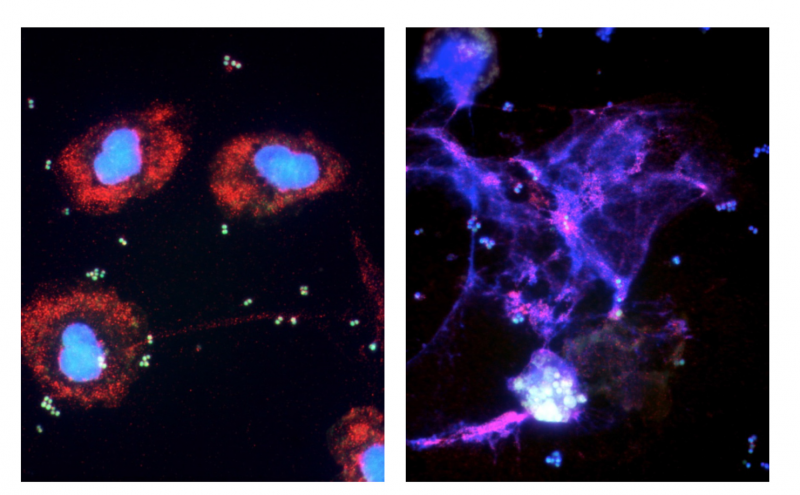Mucus—the first line of defence

By licking a wound it heals faster – this is not simply popular belief, but scientifically proven. Our saliva consists of water and mucus, among other things, and the mucus plays an important role. It stimulates white blood cells to build a good defence against invaders, according to a group of researchers at Lund University in Sweden together with colleagues from Copenhagen and Odense in Denmark.
"White blood cells are among other places located in the oral mucosa, and they represent the body's first line of defence against infectious agents. The mucus in the mouth causes the white blood cells to throw out a 'net' that traps bacteria", explains Ole Sørensen from the Division of Infection Medicine.
This trapping mechanism is in itself not new – it was first discovered about a decade ago. But the Lund research group now shows that the nets in the oral mucosa specifically, have special properties. These nets are much better at capturing and killing bacteria than the nets produced by white blood cells in other parts of the body.
"It appears to be precisely the mucus in the saliva that stimulates white blood cells to form these effective nets of DNA and proteins", says Ole Sørensen.
The researchers also found that patients with two diseases that both cause mouth ulcers lack saliva that manages to stimulate a successful net formation. One of the two diseases is aphthous stomatitis, a common ailment, which means that a person will often develop ulcers in the mouth and on the lips. In the best cases, the ulcers are minor and heal within a week, but they can also be major and more long-lasting.
The second disease is Behçet's disease, which is unusual in Scandinavia but more common in the eastern Mediterranean region and further east. This disease causes problems not only in the mouth but also on the genitals and in the eyes.
"We cannot determine that these diseases are caused by the mucus's inability to stimulate the white blood cells to produce efficient nets. There may also be another, underlying cause for the ulcers and the changes in the saliva", says Ole Sørensen. He hopes to be able to continue researching these connections.
As long as the root cause of the disease is unknown, there is no fully effective cure. People with aphthous stomatitis are usually recommended to use special mouthwashes and toothpastes, and patients with Behçet's disease receive anti-inflammatory drugs. The new knowledge about the mucus's formation of nets could possibly lead to new drugs in the future.
More information: T. Mohanty et al. A novel mechanism for NETosis provides antimicrobial defense at the oral mucosa, Blood (2015). DOI: 10.1182/blood-2015-04-641142


















